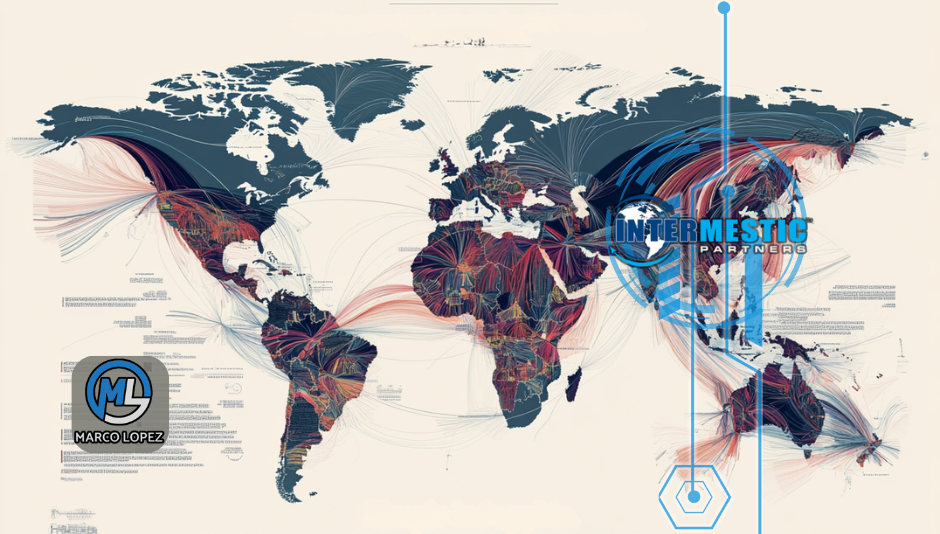Cutting U.S. Aid to Latin America: The Hidden Trigger for a Migration Surge
- Marco Lopez

- Jun 9, 2025
- 2 min read

For decades, U.S. aid to Latin America has helped foster stability, reduce violence, and strengthen economies. But growing political pressure to cut that aid could ignite unintended consequences—chief among them: a surge in migration toward the U.S.
As former mayor of a border city in Arizona, Director of the Arizona Department of Commerce, and Chief of Staff at U.S. Customs and Border Protection, I’ve seen how deeply foreign aid shapes migration patterns. Today, as CEO of Intermestic Partners—an international business advisory firm founded in 2011 specializing in cross-border trade and development—I help companies and governments prepare for the ripple effects of these shifting policies.
Why U.S. Aid Matters
U.S. financial assistance supports:
Economic development
Health and education programs
Violence prevention and rule of law
When these investments succeed, fewer people feel compelled to leave their home countries in search of safety or opportunity.
Following EU aid cuts to African nations in the 2010s, Europe saw a sharp rise in migration—offering a cautionary example for U.S. policymakers today.
The Real Risk of Aid Cuts
If U.S. aid is slashed, Latin America could face:
Rising poverty and unemployment
Escalating violence and insecurity
Weakening governments and institutions
Each of these pressures fuels migration northward—exactly what many policymakers claim they want to prevent.
Current Migration Ties to Aid Levels
When U.S. aid addresses root causes like gang violence and poverty, migration flows drop. But when that support falters, desperation grows. Many migrants currently arriving at the U.S.-Mexico border cite worsening conditions at home as their primary driver.
Debating the Aid Cuts
Supporters of cuts argue:
Latin America should be more self-reliant
U.S. taxpayers shouldn’t subsidize foreign governments
Critics warn:
Cuts will exacerbate instability
Migration pressure on U.S. borders will intensify
Long-term U.S. interests in the region will suffer
Policy Implications for the U.S.
Aid cuts wouldn’t just affect Latin America—they would reverberate inside the U.S.:
Southern border states like Texas and California would bear the brunt of new migration waves.
Strained U.S.-Latin America relations could impact trade, security cooperation, and diplomatic ties.
A Smarter Path Forward
Foreign aid isn’t charity—it’s a strategic investment in regional stability and U.S. national security. Rather than cutting aid, we should:
Target funds toward economic empowerment and anti-corruption efforts
Strengthen regional partnerships
Build cross-border economic development projects
At Intermestic Partners, we help design these cross-border strategies, connecting public policy with real-world business growth and social stability.
The Stakes Are High
The decision to cut aid isn’t just about budgets—it’s about people, security, and long-term stability on both sides of the border.
Partner with Intermestic Partners to help shape sustainable, forward-thinking solutions that protect both regional prosperity and U.S. interests.
.png)




Reducing U.S. aid to Latin America disrupts local economies and fuels instability, pushing more people to migrate in search of opportunity. Likewise, what is embroidery digitizing highlights how strategic support and precision can create stability and growth in any field.
some people experience muscle fatigue and search for home remedies that are simple and discreet. introducing a vibrator into this regimen may help soothe tension while providing gentle comfort. modern devices are waterproof, allowing usage in relaxing environments like bathrooms. this flexibility ensures privacy, improves mood, and encourages better self-awareness, all while supporting affordable and accessible personal wellness solutions.
This article sheds important light on a complex issue. Cutting U.S. aid to Latin America clearly has deeper consequences than many realize, especially when it contributes to instability and increased migration. It's crucial to look at the root causes rather than just the symptoms. On a practical note, for those involved in advocacy or journalism covering this topic, it might be a good time to sell iPhone and upgrade to a device with better tools for capturing and sharing stories from the field. Thank you for highlighting this often overlooked connection.
Badwap is the ultimate destination for adult video lovers. Enjoy free, high-speed downloads, vast categories, and the latest updates — all in one place. Badwap makes private pleasure effortless and exciting.